Twenty for 2020
The starkness of the past two months has provided ample time to reflect on what makes the academic enterprise at William & Mary special and what’s been lost during this crisis. I’d like to finish the academic year with a photo essay that illustrates the spirit of our community and the wonder of research discoveries.
I selected twenty of my favorite pictures from 2020 (plus one from 2019), it was difficult to whittle my collection down to just twenty pictures, as in any given semester I take hundreds of images from classes and field trips as well as from our many research projects. I chose not to re-use any pictures from posts earlier this year and sought out variety. It’s a quirky collection, but nevertheless, I hope you enjoy it. Click on the pics to enlarge them.
Sunset on 2019
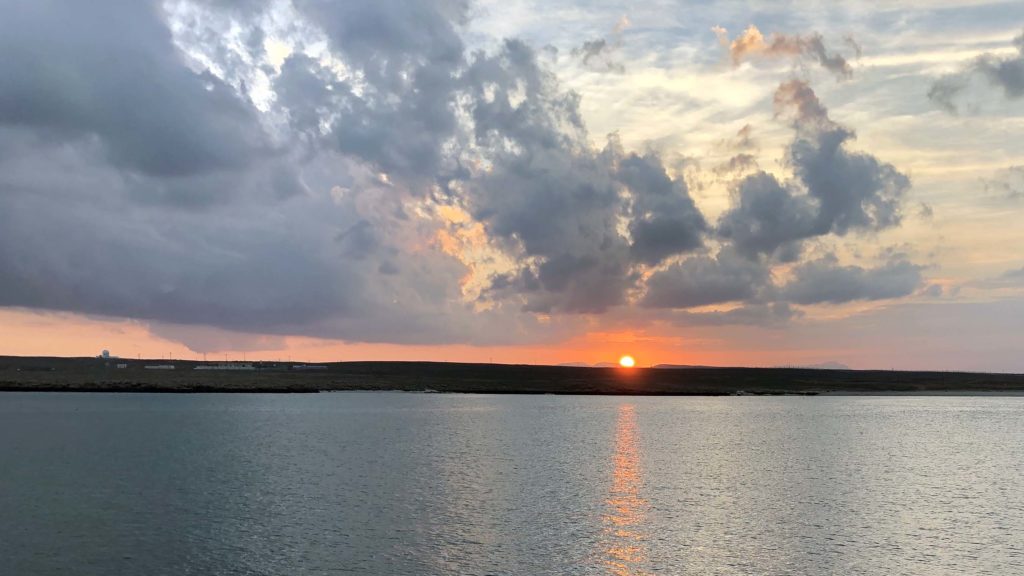
A beautifully memorable sunset on December 31st, 2019 at Ras al Had, Oman on the eastern tip of Arabia. Who knew what the new year would bring?
Sidaq Gorge
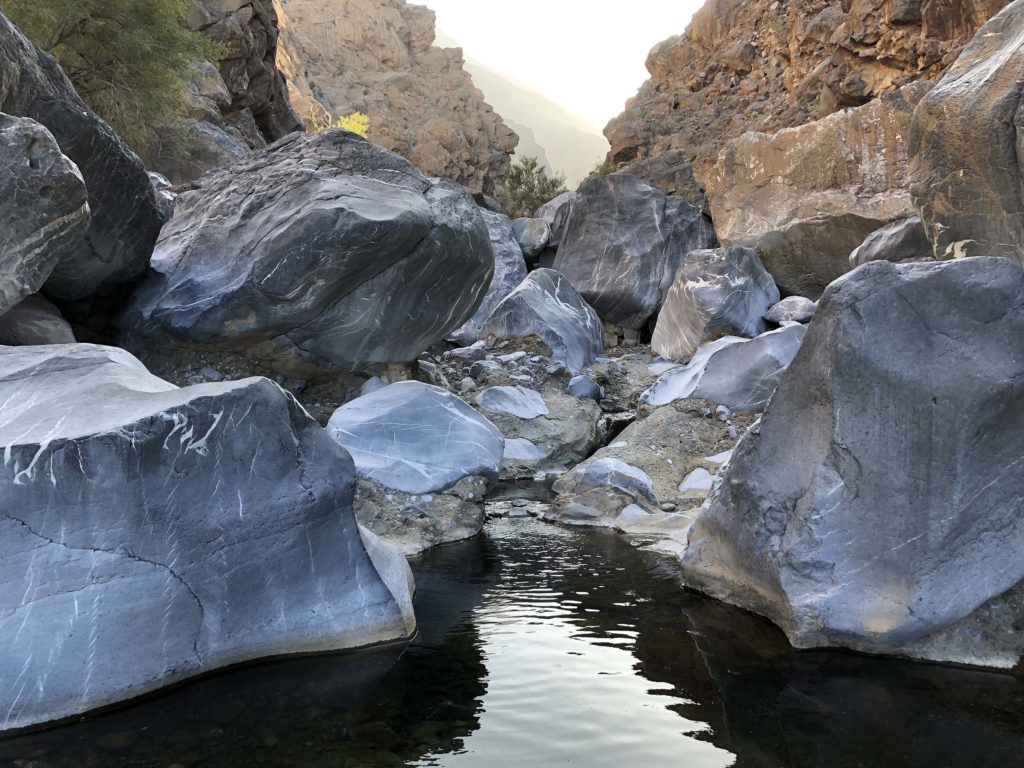
Enormous limestone blocks in the Sidaq Gorge, Oman. We hiked into this dramatic gorge on the first day of our Rock Music Oman 2020 program with 24 William & Mary students.
Scholars in the Sand
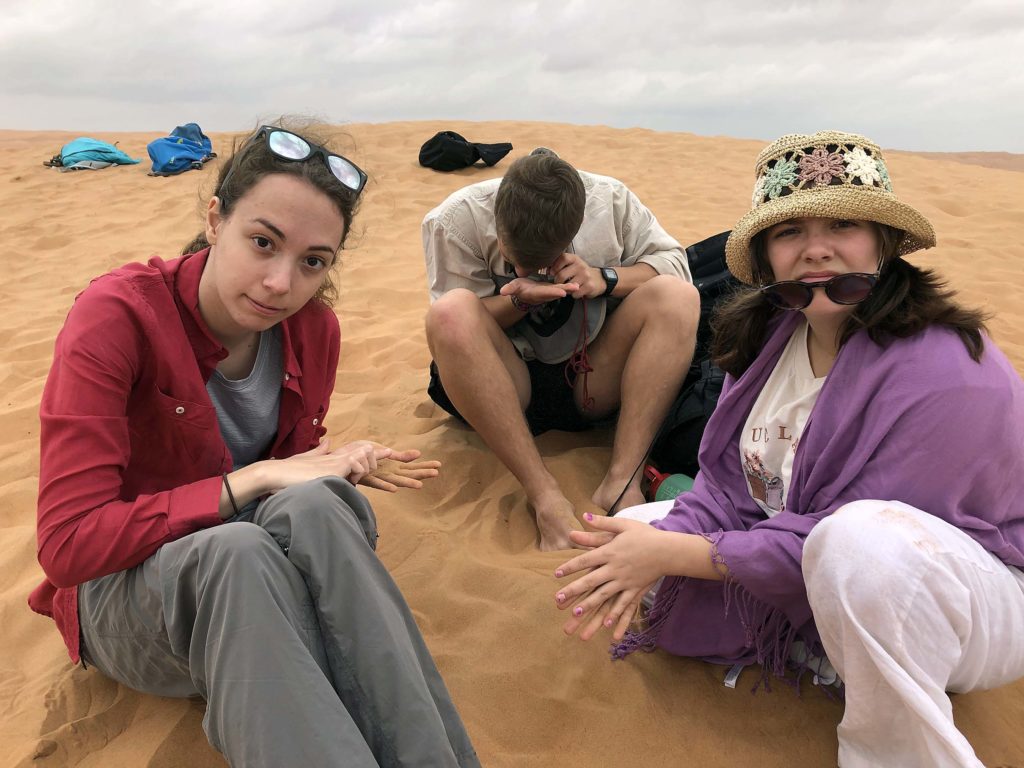
Grace Westcott, Tim Terlizzi, and Natalie Rowland (from left to right) investigate the mystery of sands on the dunes in the Wahiba Sands, Oman.
Learning 2020
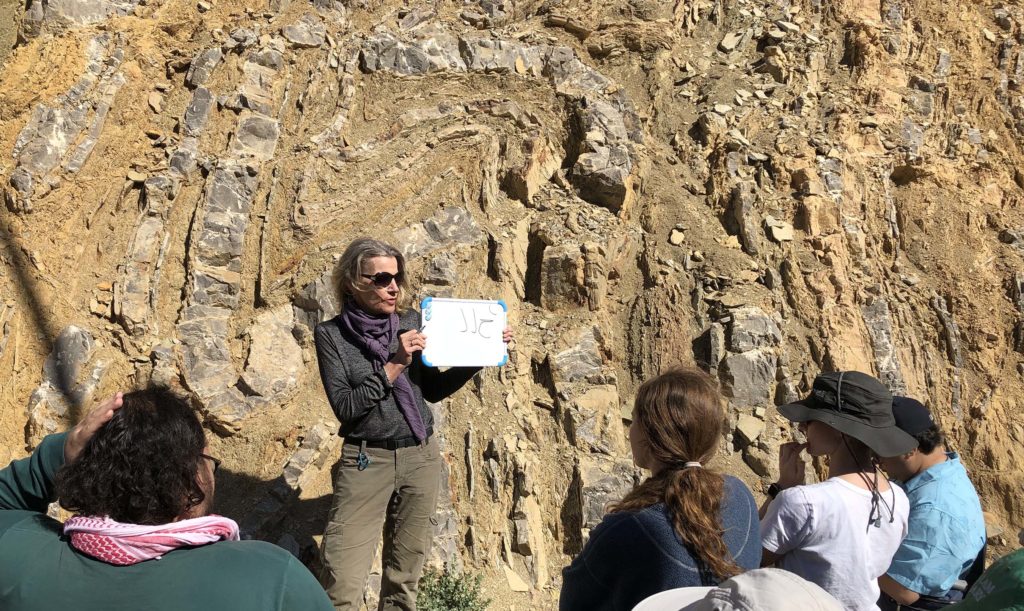
Professor Anne Rasmussen discusses the crescent of learning with a backdrop of garishly folded Hawasina Group sedimentary rocks, Oman.
All Along the Watchtower
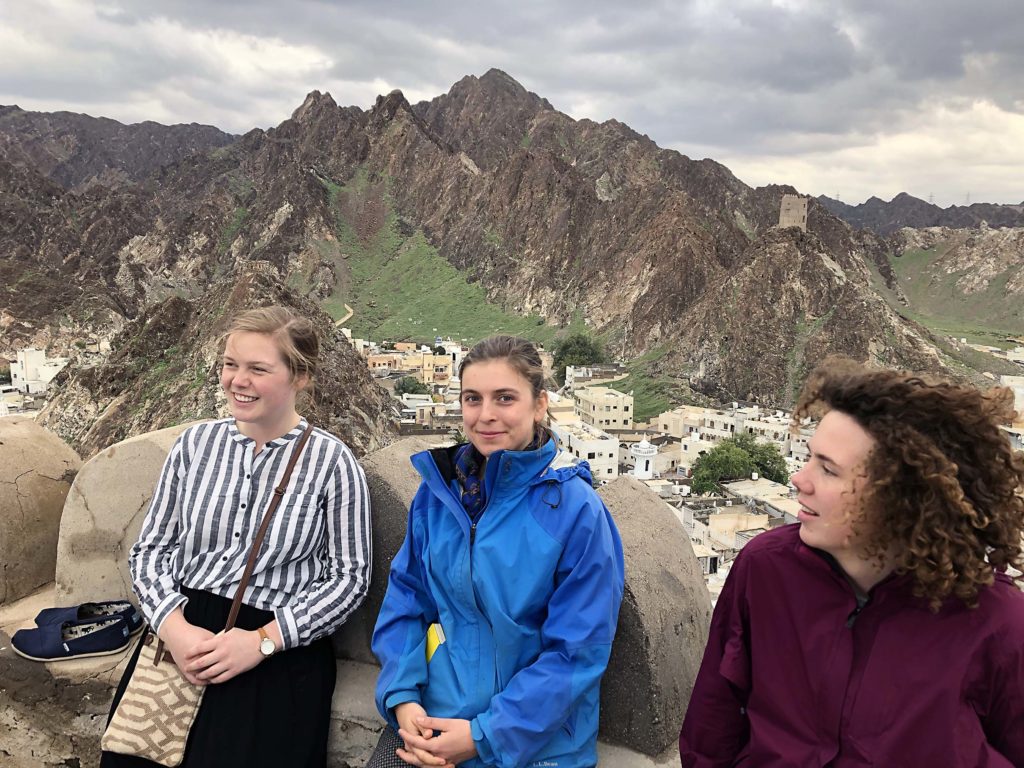
Emily Hinshaw, Evan Laughlin, and Ella Kasten (from left to right) survey the scene from atop the ramparts at the Mutrah Fort, Oman. Note the jagged hills in the background underlain by peridotite, rocks that once were located in the Earth’s mantle.
Goodbye Old Friend
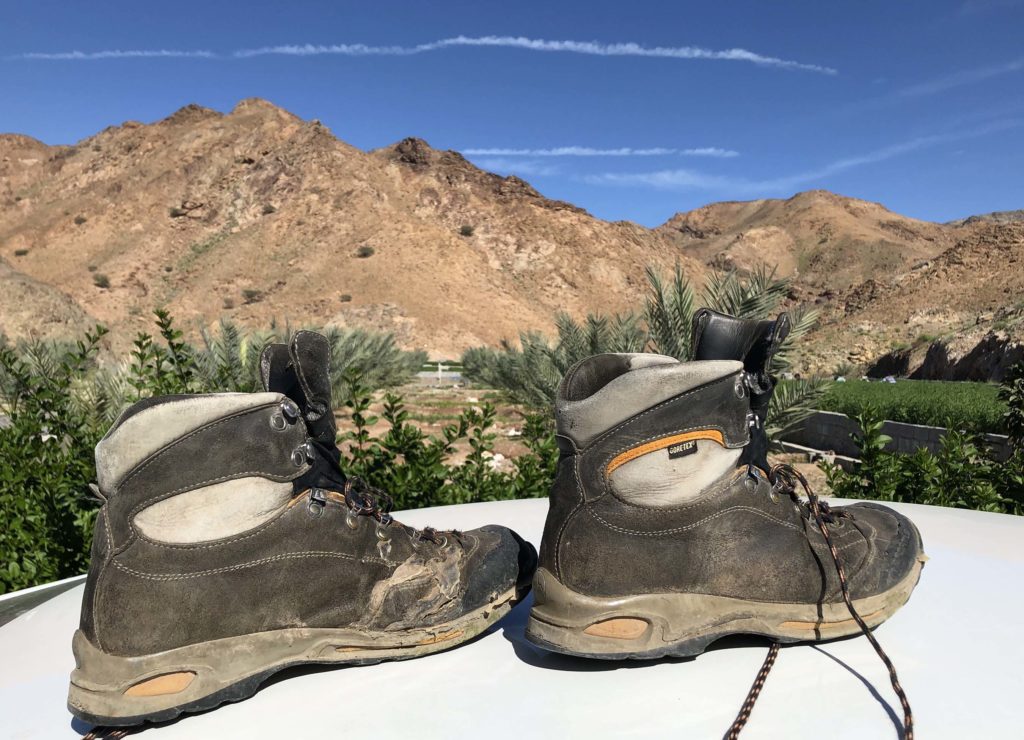
At the end of the last traverse for my old boots. These boots first came with me to Oman in December 2013 and have been my trusted field partner for years. Yet, the ophiolite took its toll and the boots were no longer repairable. I’ve written blog posts about field pants and canoes to celebrate their worthiness, perhaps these boots deserve a eulogy as well.
A New Semester Begins
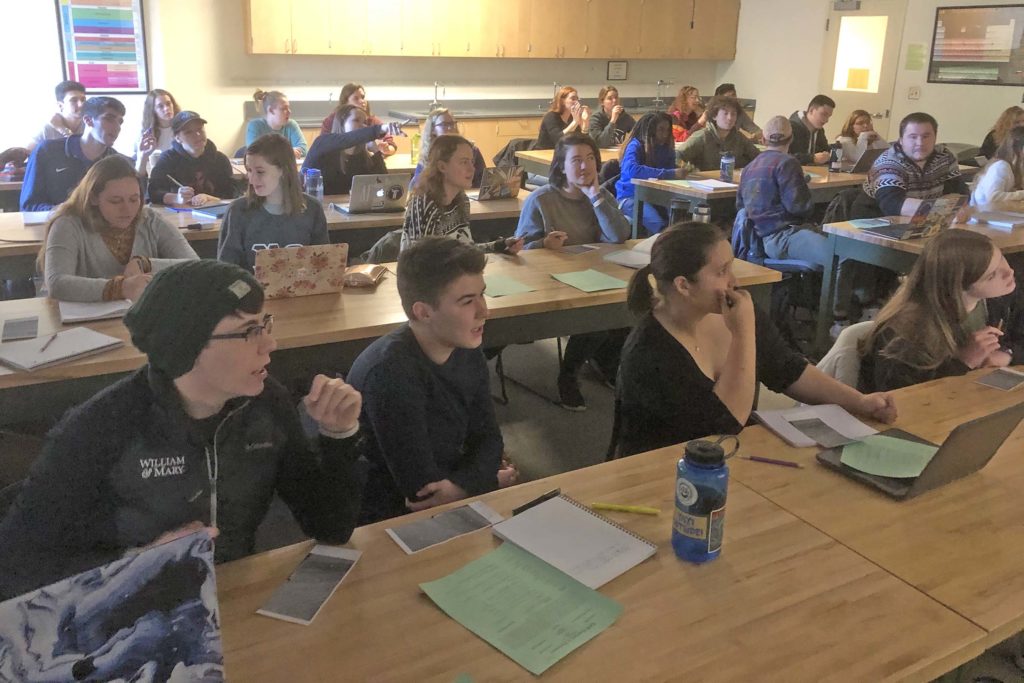
An eager cadre of geology students on the first day of the Spring semester in Earth Structure & Dynamics.
Sunrise on the Sunken Garden
A Geology Tradition

A panoramic view of the Geology Department community meeting in full swing. It’s a tradition that we start each semester with a gathering to outline the semester ahead and get reacquainted. Geology technician Bianca Boggs anchors the left flank, while Professor Nick Balascio looks askance on the right.
Gladiator Weekend
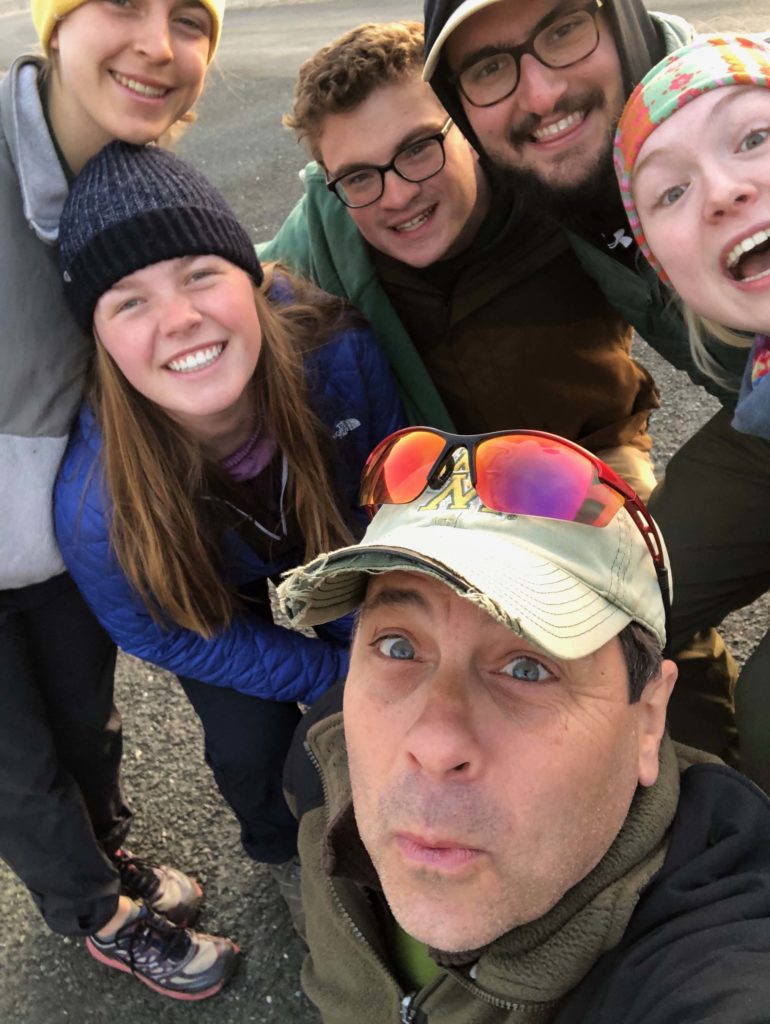
The Gladstone Gladiators on the chilly morning snapping a selfie before heading off for field research in the Piedmont. The Gladiators are among the most epic group of students researchers I’ve had the pleasure of working with.
Field Companions
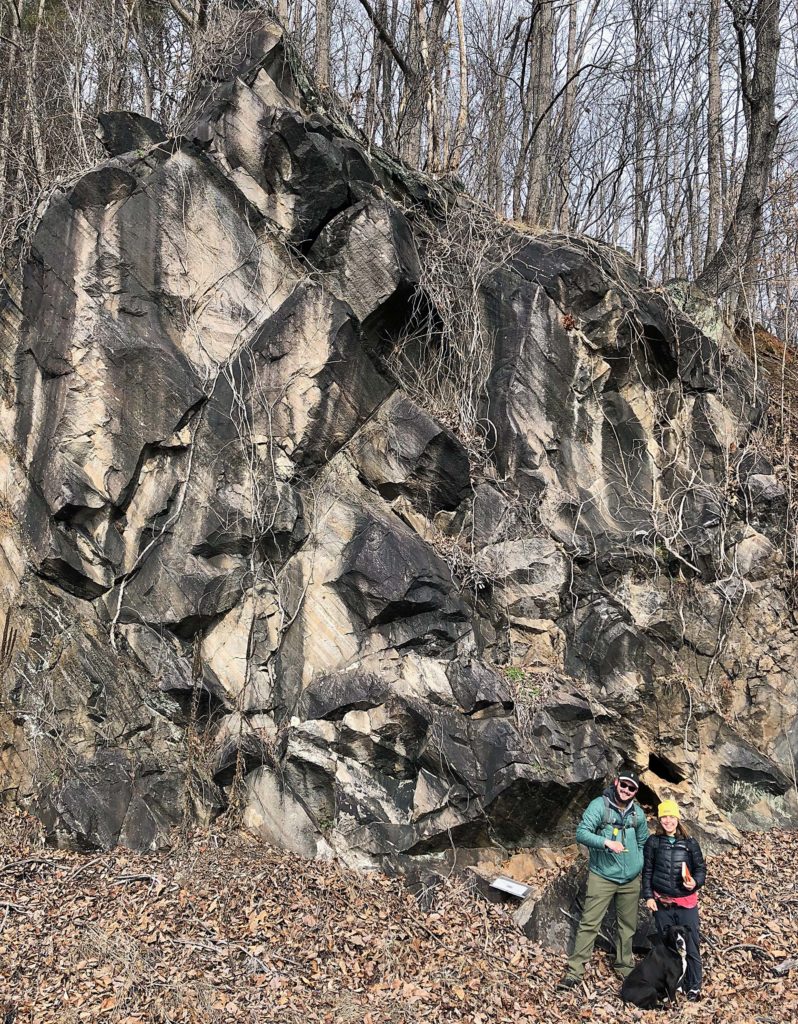
William & Mary geologists Sam Belding and Evan Laughlin with their cooperative canine field partner. Note the outcrop of well-bedded quartzite from the Evington Group, layering dips moderately towards the southeast.
Contacts and Clarity
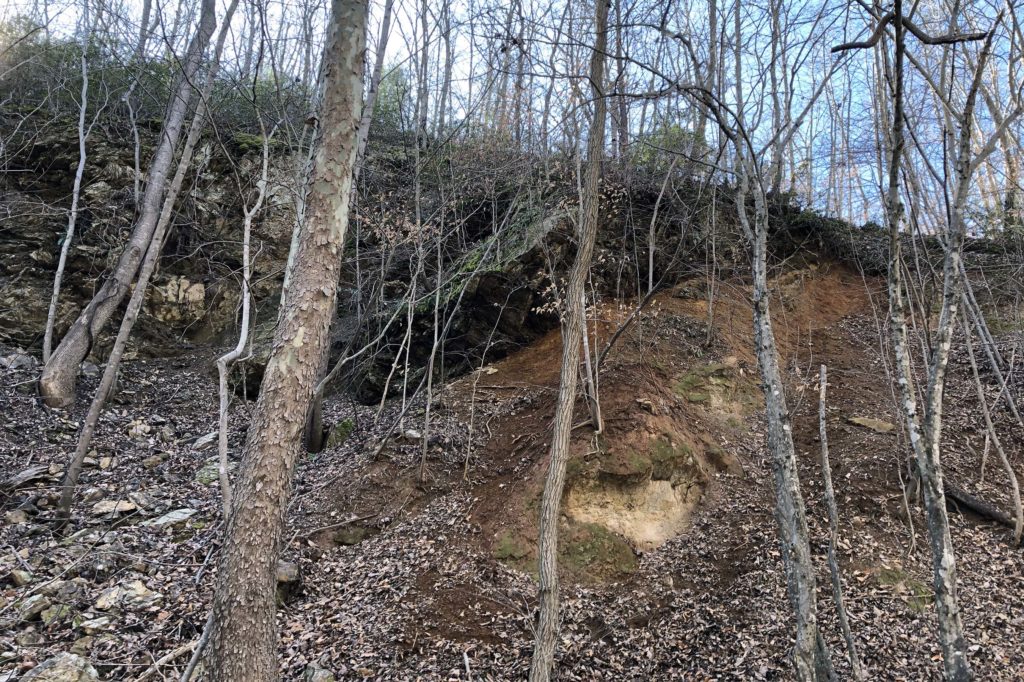
This might not look like much, but this scene, on a steep wooded hillside near Bent Creek, Virginia is one of the most insightful outcrops in the Piedmont. Evan Laughlin and I discovered this outcrop on a traverse during Gladiator weekend. On the annotated version (below) notice the geological contact (red and white line) that separates the muscovite schist from the underlying granitic gneiss. That contact is a fault, and a major tectonic boundary. In the Virginia Piedmont, it’s rare to observe contacts because bedrock exposures are typically covered by soil and vegetation.
Sunshine on a Cloudy Day
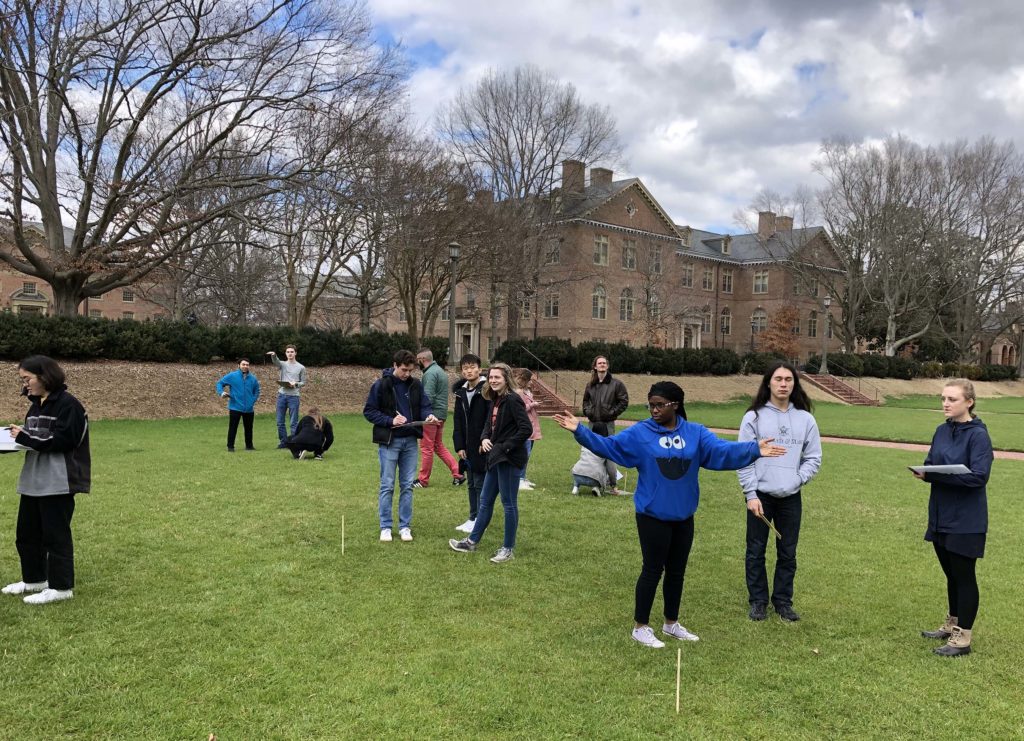
Students in my 2020 Weather, Climate, and Change course waiting for the sun to emerge from behind clouds during an activity in the Sunken Garden.
Snow Day
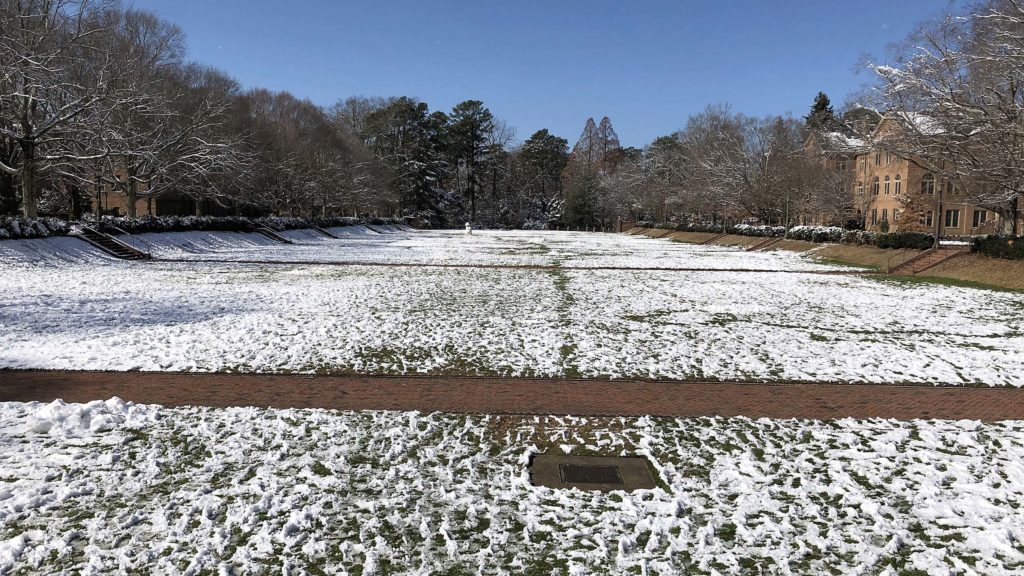
Hours after a February snow, melting is well underway in the Sunken Garden (view to the west). Why is the slope on the northern side of the Sunken Garden free of snow?
Geowallies Galore
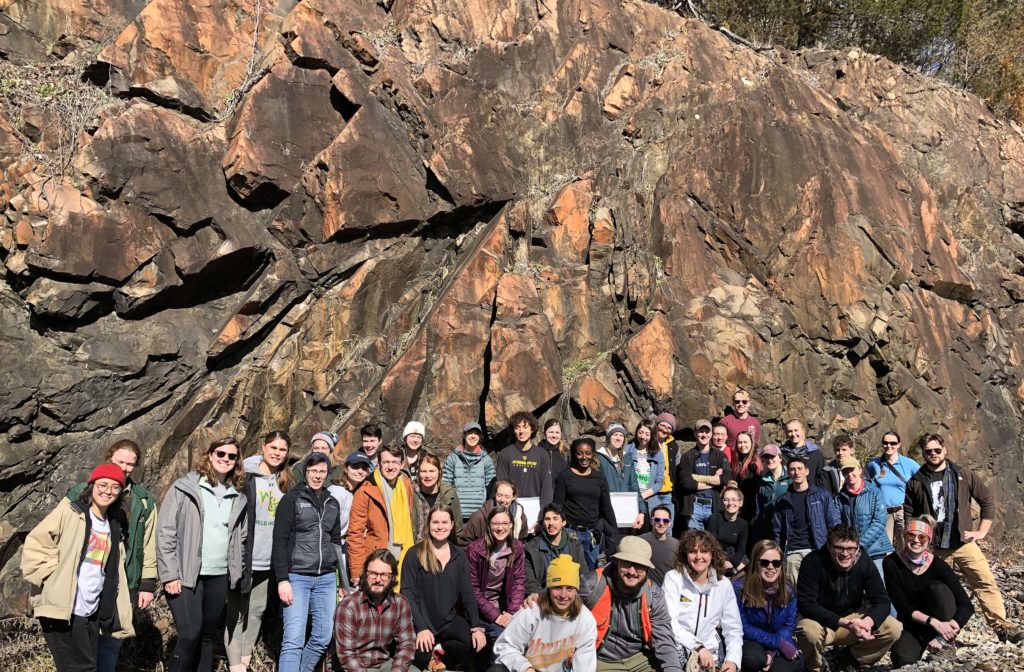
Geowallies on the Spring 2020 departmental field trip at a large outcrop of diabase near Norwood, Virginia.
Rabble on the Riprap
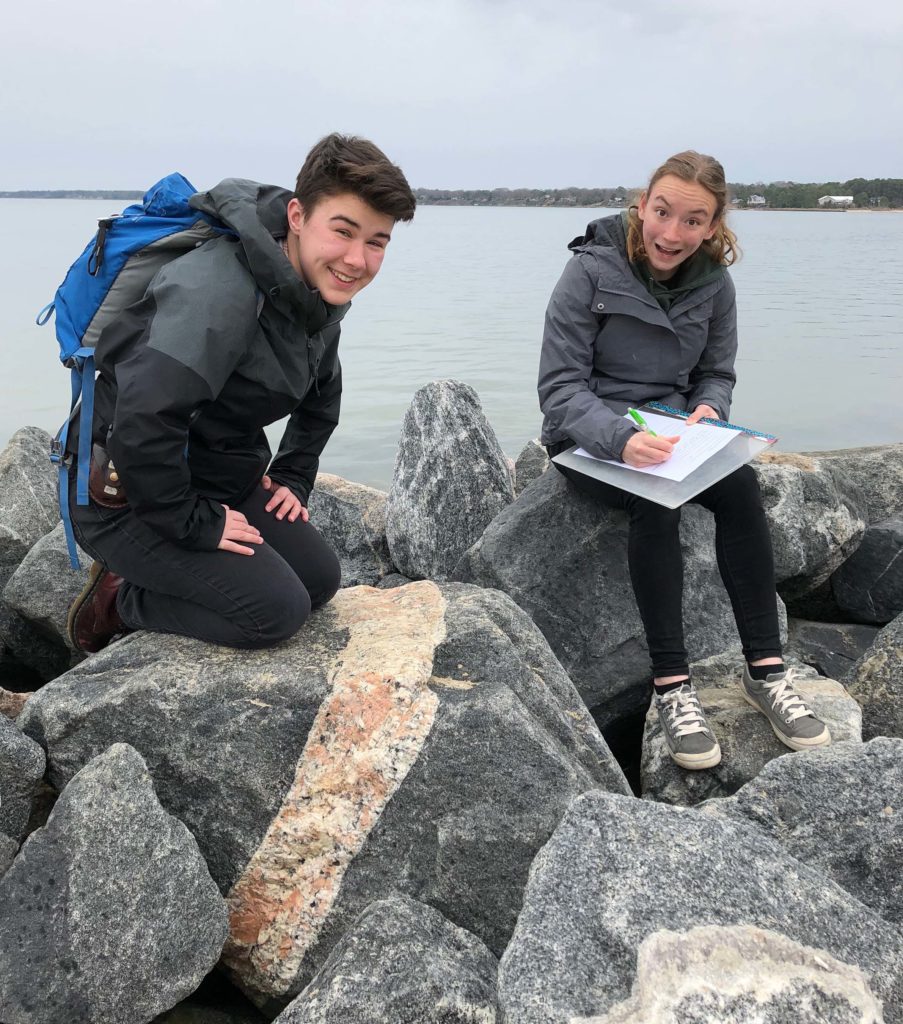
Lee DePue (left) and Danni Riggs (right) discuss a pegmatite dike exposed in the riprap (placed blocks of rock used to armor shorelines) along the York River.
Where are the Redcoats?
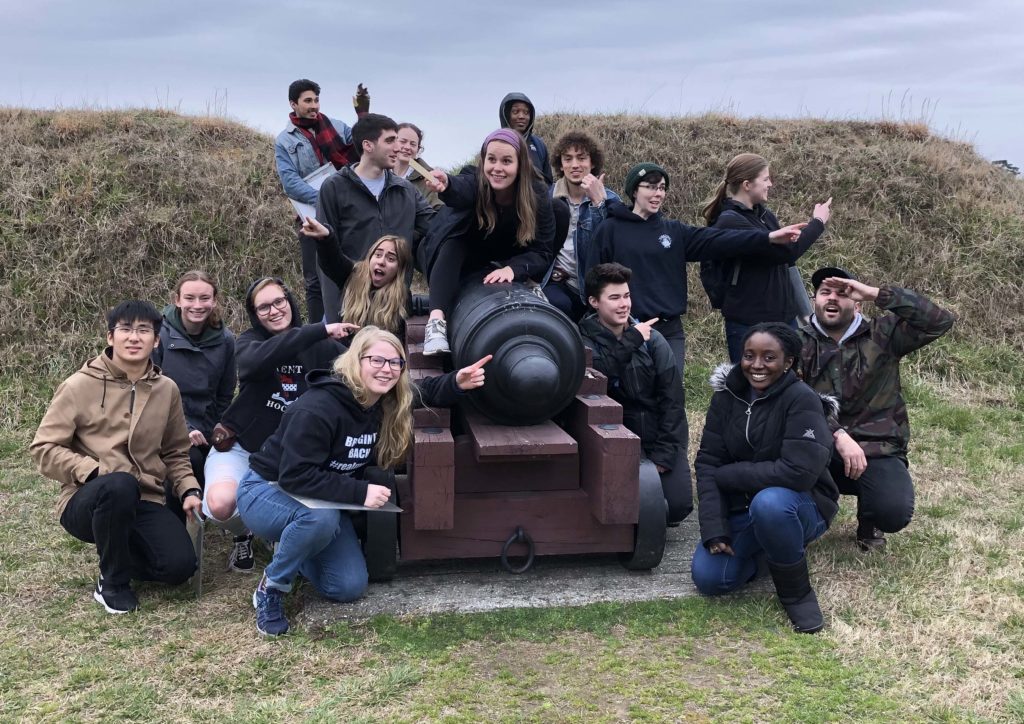
The Monday afternoon Earth Structure & Dynamics lab class attempts to locate the British troops on the Yorktown Battlefield. This is an annual field trip for my Earth Structure & Dynamics class.
Ready for the Weather?
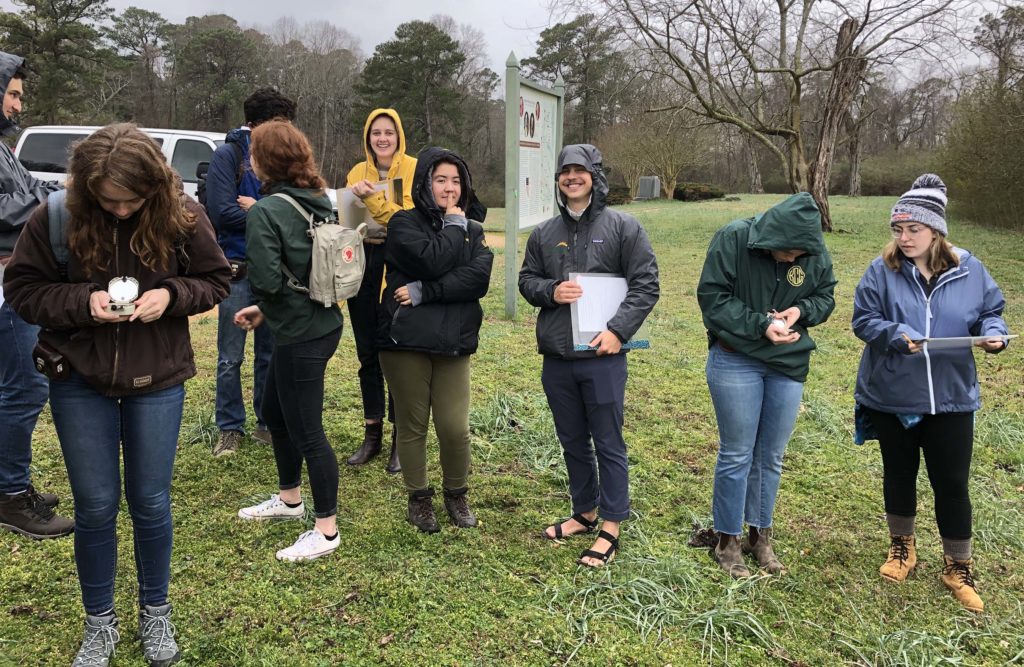
The Tuesday afternoon Earth Structure & Dynamics lab sets to work making measurements along the York River on a dreary day.
Secrets from the Deep
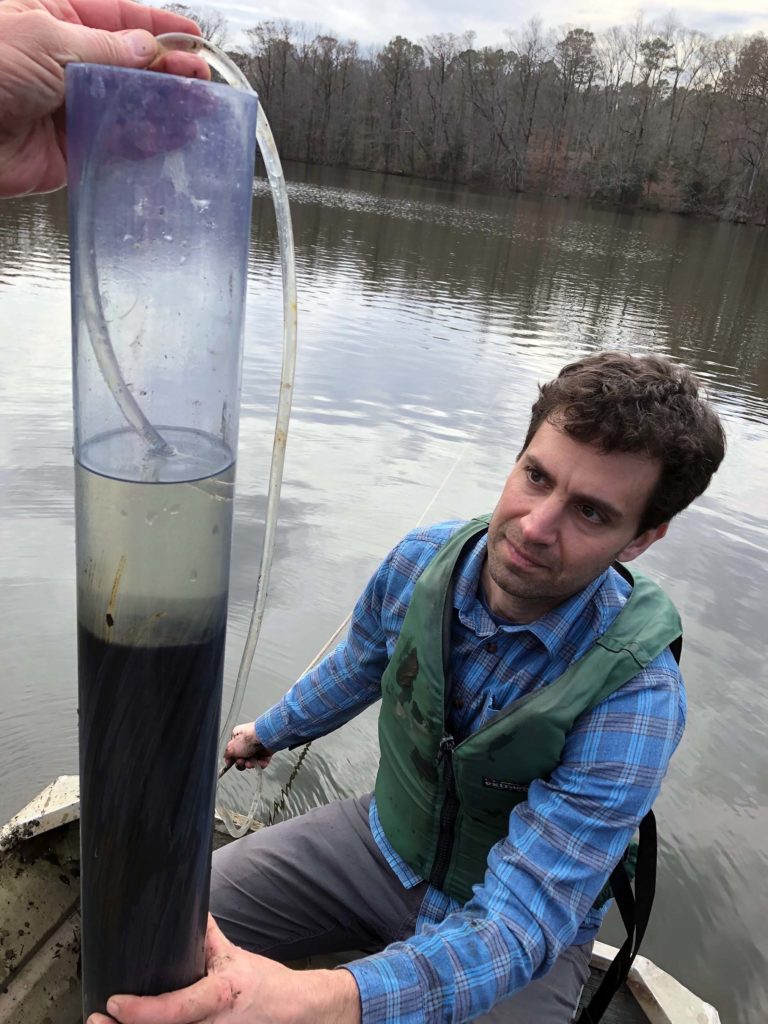
Professor Nick Balascio with a sediment core that we just extracted from the bottom of Jolly Pond. Mud in the tube contains a record of environmental change in this watershed over the past 200 hundred years.
A New Kind of Faculty Meeting
William & Mary Geology Graduation 2020
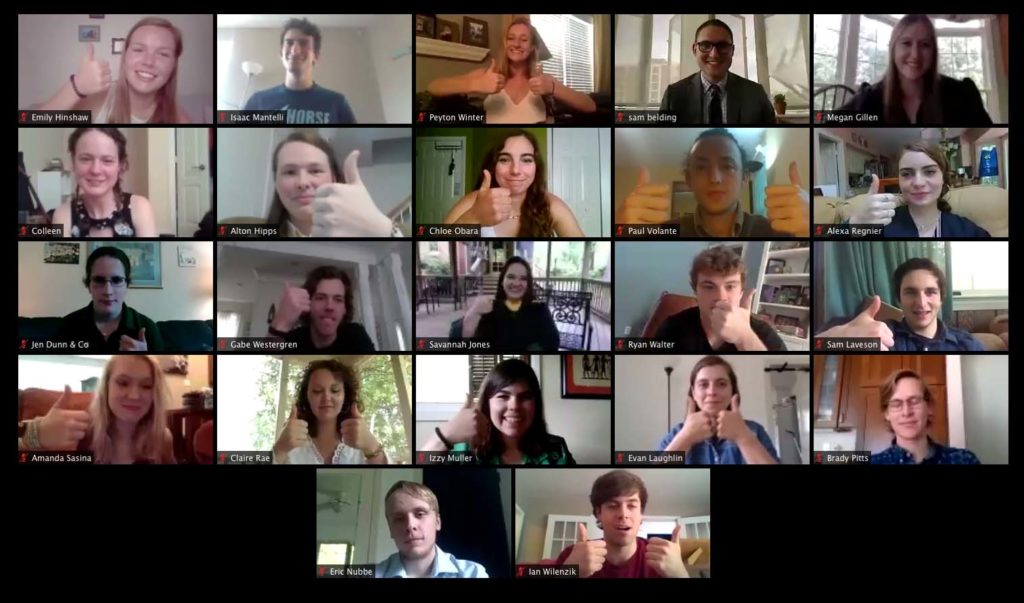
Screenshot of the 2020 William & Mary geology graduates (most of them) from our online and in real-time virtual graduation hosted on Zoom. It was exciting but bittersweet. It was surreal but affirming.
All but the last two photos were snapped prior to the pandemic’s arrival. From there the trajectory of the spring semester changed dramatically. Zoom sessions and distant learning have become our new reality. Virtual labs submitted to Blackboard and on-line discussions in virtual breakout rooms aren’t particularly photogenic!
I’m proud of my colleagues who took on the challenges of on-line teaching, but also worked tirelessly to maintain that personal connection with students. It’s this connection that generates community and ultimately that’s what makes William & Mary such an exceptional place.
Take good care.
Chuck
Comments are currently closed. Comments are closed on all posts older than one year, and for those in our archive.

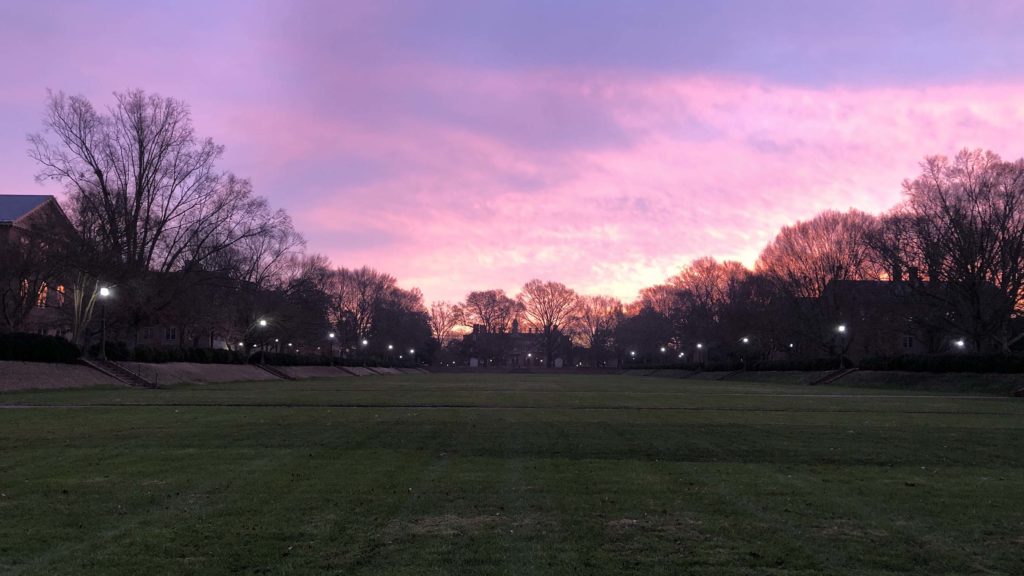
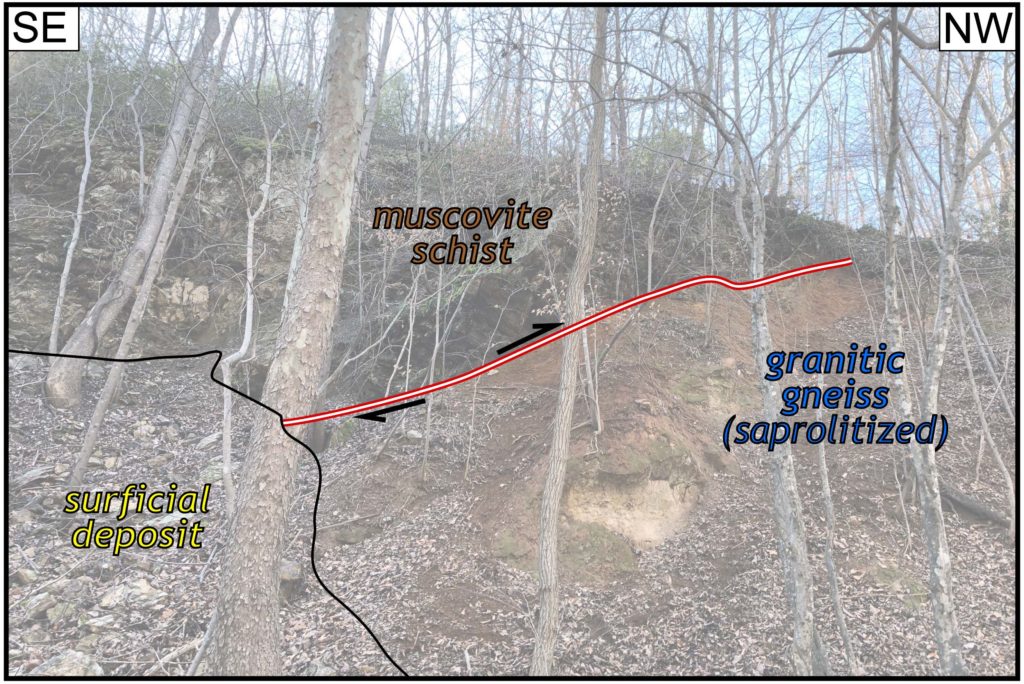
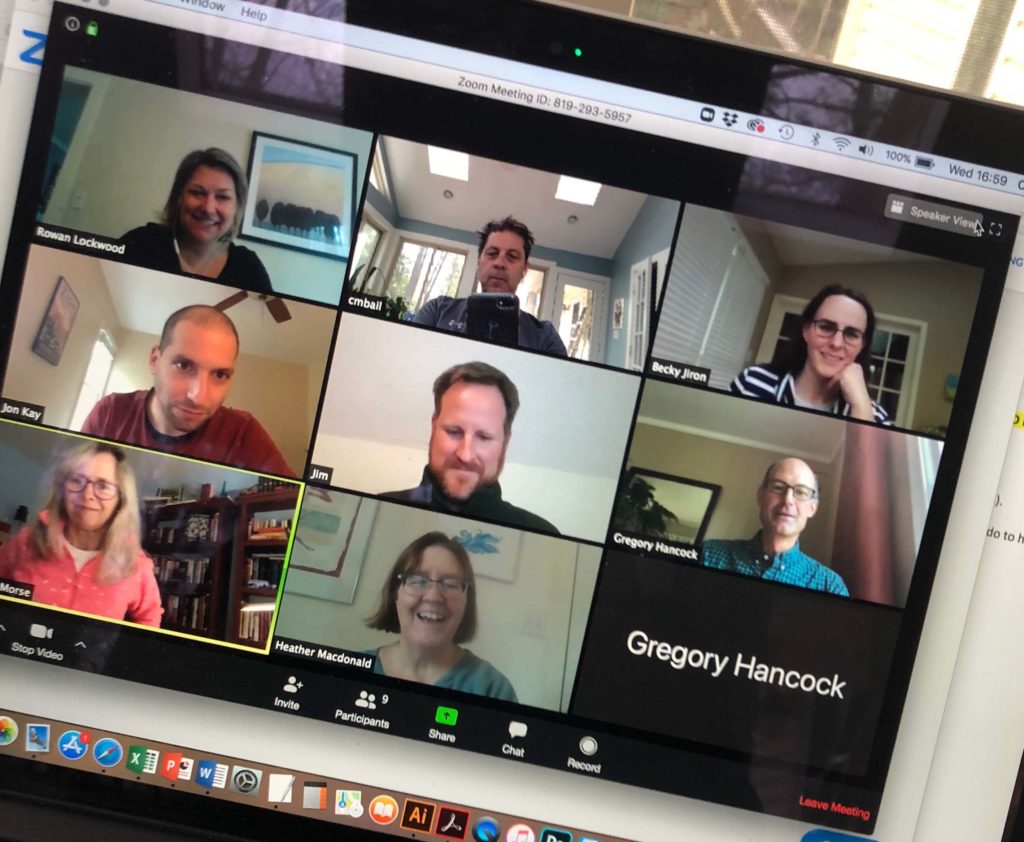

Very nice, Chuck! It records one crazy semester…
Thanks for the uplifting post!
Nice post! Miss you Dr. B!
Thank you, Chuck.